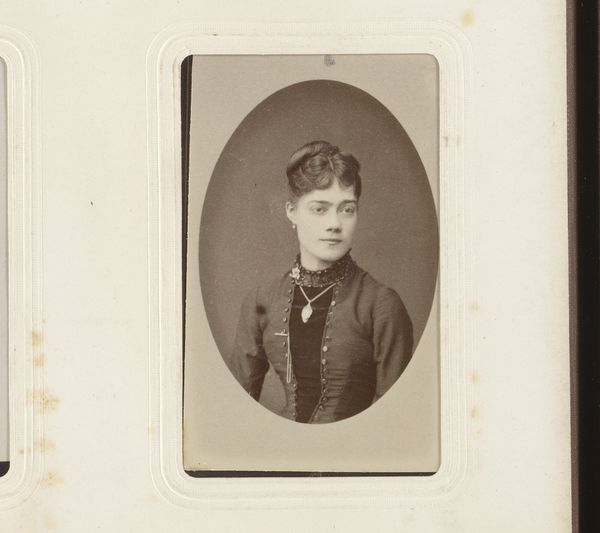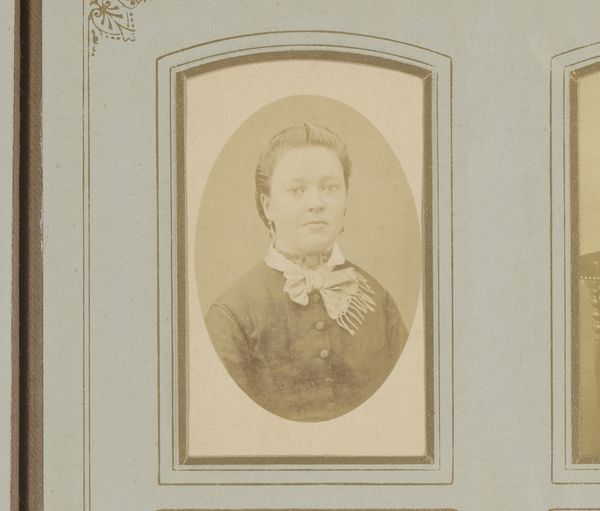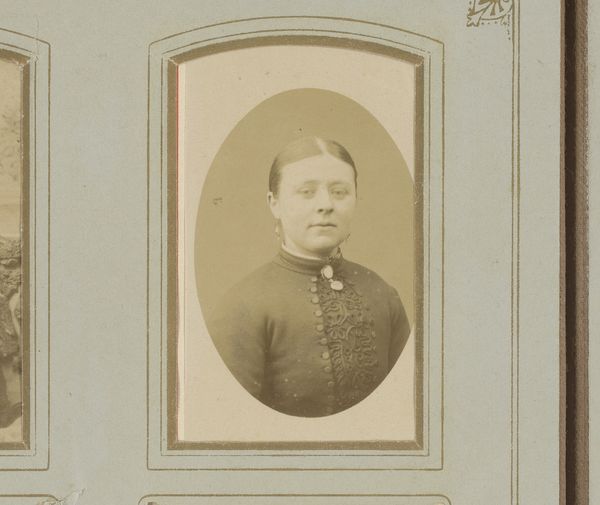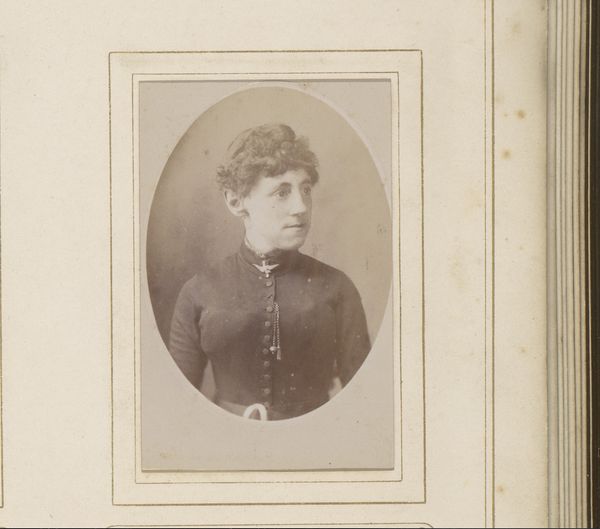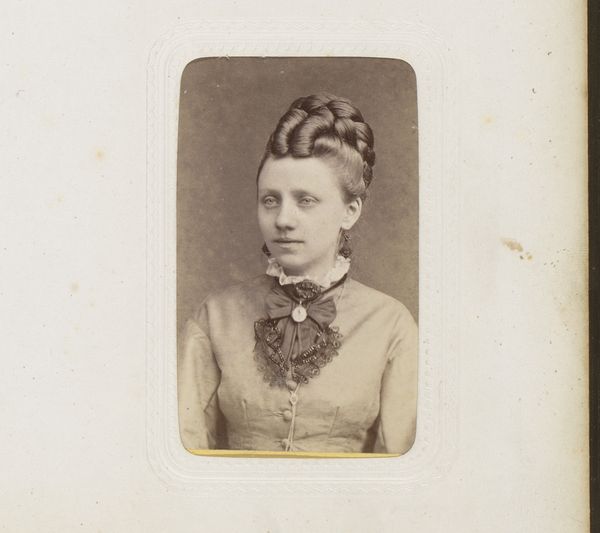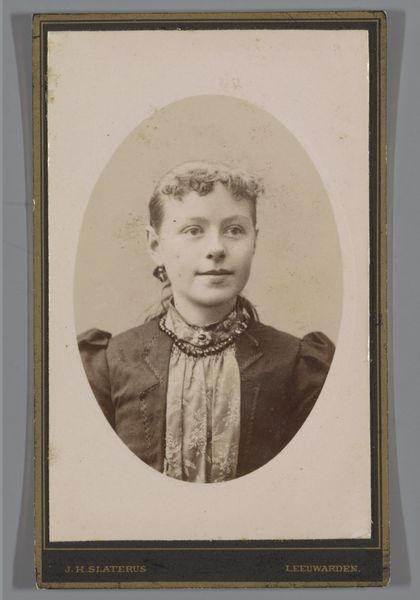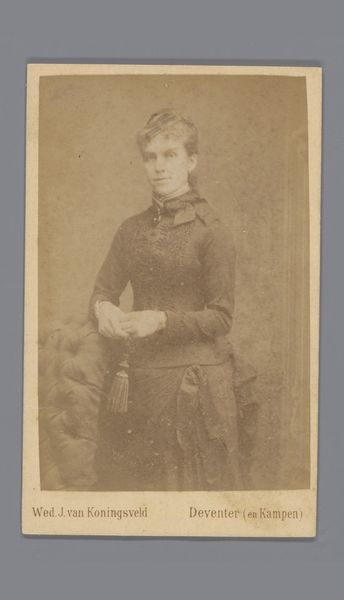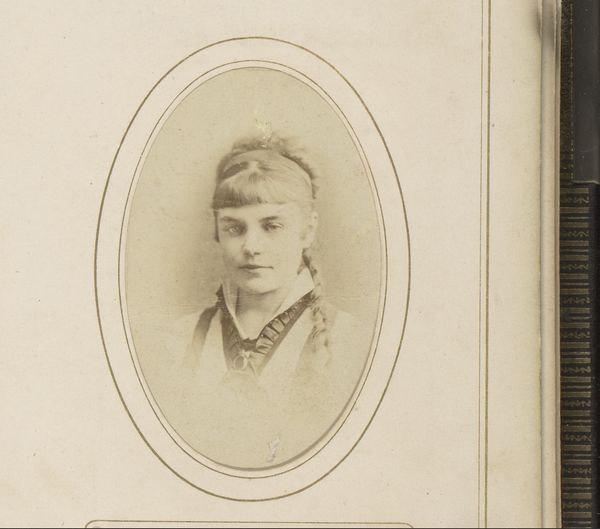
photography
#
portrait
#
charcoal drawing
#
photography
#
charcoal
#
realism
Dimensions: height 85 mm, width 52 mm
Copyright: Rijks Museum: Open Domain
Curator: We're looking at "Portret van een jonge vrouw met halssieraad" by J. Van Crewel Jeune, a portrait from between 1883 and 1905. It appears to be a photograph, though it mimics the tonal range of charcoal drawings. Editor: The first thing that strikes me is the somber tone, despite what must have been elaborate garments and accessories. I'm immediately curious about the materiality of that fur hat and detailed neck adornment against the stark backdrop. Curator: Exactly. It's fascinating how clothing of that period becomes almost armor. The adornments here signify a kind of constructed identity – layers of class, expectations, perhaps even aspirations, built on the individual. Editor: Right, this image makes me think of production: where did the fur come from? How labor intensive was the creation of that halssieraad? Consider the photographer too: who had access to such services and what did posing for this portrait signify in their lives? Curator: And think of the social conventions at play. Her averted gaze—is that demure modesty, a hint of dissatisfaction, or something else entirely? Consider that she looks into a symbolic, brighter future of possibility away from us. Editor: Maybe. But I wonder about the materiality again, and even the process: How many prints were made of this image? Did the sitter see and approve it? And how did those choices reinforce her social positioning? This seems to me a study on commodity more than introspection. Curator: It's interesting that you see it that way. For me, photography in this era is so imbued with ideas about memory and status – creating these idealized yet tangible relics. I'm captivated by the potential the future contained in the portrayed youth’s hopeful glance. Editor: True. We are dealing with a complex visual economy. So the photograph then serves simultaneously as both a memorial and an object made and consumed in a culture with specific tastes and material realities. Curator: Indeed, and it serves to prove that photographic portraits are so laden with context—personal, historical, artistic—that even in what appears to be a straightforward image, entire worlds unfold. Editor: Agreed. Looking closer at production reveals not only the era's resources and industries, but also complicates this “straightforward image’ and helps deconstruct ideas of authorship.
Comments
No comments
Be the first to comment and join the conversation on the ultimate creative platform.
